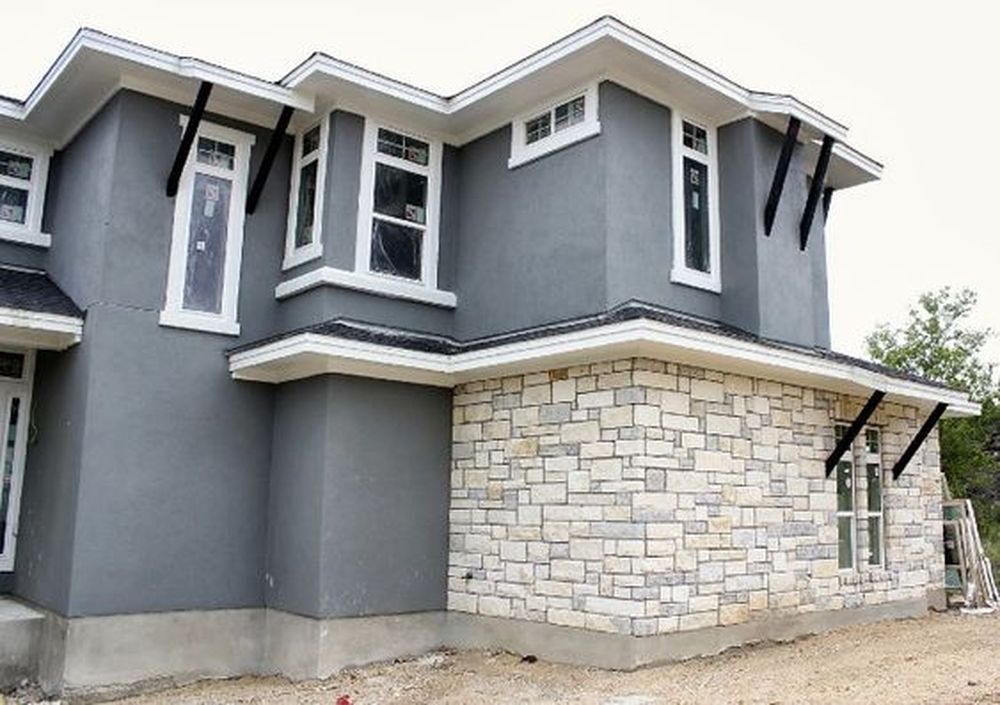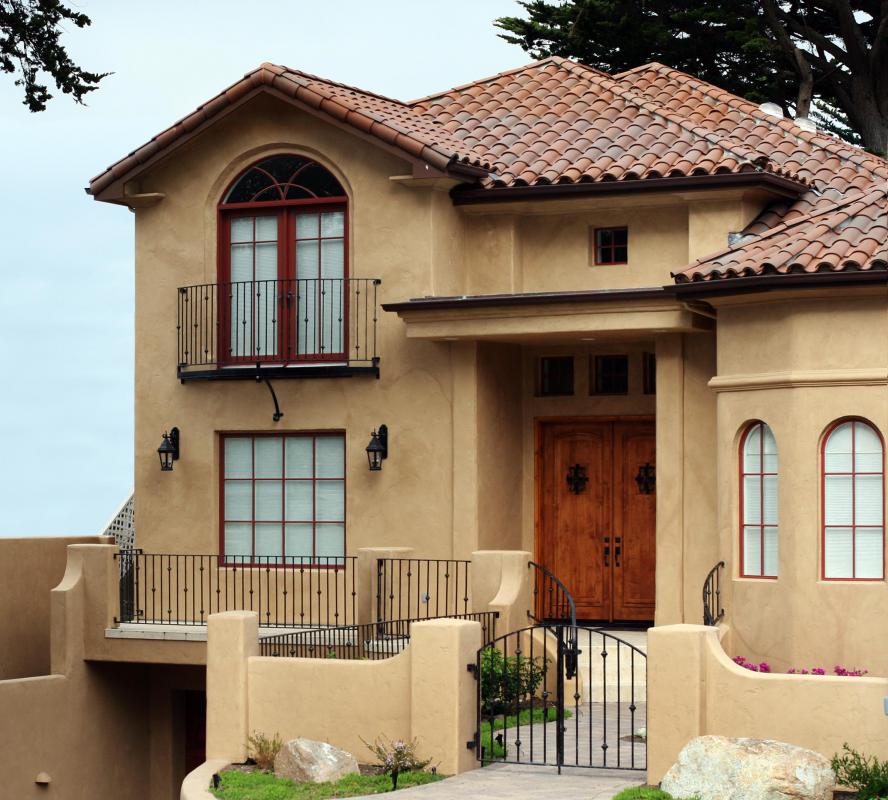Table Of Content

It is most often used in dry, hot climates because it can resist glare and won’t hold heat. Stucco is an energy-efficient material because of the complete, solid shell it forms. It is resistant to glare, so in very sunny and hot areas, it actually deflects heat. This is why it’s important to do plenty of research before deciding to use stucco or buy a stucco home. Our designers only use and recommend products that we know, love, or would use on our own properties.
1970s-Inspired Stucco Patio Redo - Before & After Photos - Apartment Therapy
1970s-Inspired Stucco Patio Redo - Before & After Photos.
Posted: Tue, 27 Jun 2023 07:00:00 GMT [source]
So, You Want to… Paint Your Home’s Exterior
Scoop fist-size wads of wet stucco onto a brick trowel and toss them against the wire lath until it’s completely covered. Smooth the mix with a finishing trowel, then pack it against the edge of the existing stucco with a brick trowel. Keep adding more material until this layer is about 1/2 inch below the existing stucco surface.
White + Bubblegum Pink
Lightly brush away any dirt around the crack with a stiff paint brush. Because of its many shades, yellow can be bright and eye-catching or subtle yet warm. Either way, yellow stucco is sure to stand out and bring with it a refreshing tropical feel.
Difficult to Inspect for Damage
From classic, creamy white to deep charcoal gray, we hope you found your dream shade that will upgrade your home’s aesthetic and amplify your curb appeal. With warm undertones, Alabaster by Sherwin Williams has a creamy finish that makes it ideal for homes that want a softer feel. And while it does have beige undertones, this shade doesn’t skew too yellow — whether in direct sunlight or shade — to ensure your exterior always has a bright, clean look. Alabaster plays nicely with terracotta roofs, stone accents, and wooden details.
The third type of stucco finish material is synthetic, and this type is very similar to acrylic. Often, synthetic finishes are made from acrylic, but there are some differences. In most cases, synthetic finishes are used for EIFS systems because they help prevent water from entering the wall. Traditional stucco is made of Portland cement, sand, lime, and water. However, the big drawback is that it often takes more coats to apply, which means you might have a harder time installing it. Stucco is much more affordable than some other popular types of siding.

But when big cracks or blisters appear, the time to make repairs is right away, before the damage grows. Stucco can be applied over any surface, including wood and brick. A 1-inch coating of stucco can provide a one-hour firewall rating, which means it can prevent the spread of fire from one side of the wall to the other for at least one hour. With wildfires ravaging communities and homes over recent years due to arid climates, stucco is becoming a popular siding option.
How much does it cost to stucco a house?
There are many different subgenres of worm finishes, including swirl and “putz” stripes. This is a good option for people who want to have a bold interior that has a more geometric look to it. Float stucco has to be applied gently, by hand, with a float trowel. You can choose a coarse, medium, or fine type of sand finish for this option.
Step 6: Apply the Third Coat
Other costs include any necessary supplies or equipment that you don’t already have on hand. If you hire a pro this probably won’t be an issue, of course, since they most likely will bring their own. This neutral, versatile shade pairs well with almost any other color to effortlessly complement the rest of your exterior design.
Corinne Tynan is a highly skilled contributing editor at Forbes Home, with a wealth of knowledge and expertise in various areas such as interior design and home improvement. Hannah is an experienced copywriter, journalist, and content writer who loves bringing brands to life. For a crisp, modern exterior, consider Moderne White by Sherwin Williams. This white hue skews slightly gray with subtle green undertones, making it ideal for exterior spaces surrounded by lush trees, shrubs, and other greenery. Using a hammer or chisel, remove all the damaged stucco and debris, as well as some undamaged stucco around the repair area. If you’re a fan of Santa Barbara stucco, you’re in for a treat.
Stucco is a popular choice for homeowners looking to improve the look of their homes. Not only is it a popular exterior siding option, but it can also cover your home’s exterior walls. Here’s a look at how much it might cost to install stucco in different situations. Another disadvantage of a stucco house is its susceptibility to water damage. Stucco is not as waterproof as other materials, and if moisture seeps through the surface, it can lead to mold growth or structural issues.
House wrap and external insulation are often placed between the sheathing and the siding. Usually, it’s a mixture of Portland cement, sand, and either lime or gypsum. Combined, these ingredients form a plaster that protects and beautifies home exteriors. Stucco is installed in layers, a time-consuming, labor-intensive process done by skilled pros—not a job for even the most ambitious DIYer—and that’s why it can be pricey.
Place galvanized metal lath over the paper and trim it tight against the edge of the stucco. Drive more roofing nails through the mesh and into the wood lath. Apply directly to the stains with a sponge and rinse with a hose. The application process depends on the house’s structure, the stucco system used and the desired finish. Once a definitive feature of Spanish and Mediterranean architecture, stucco is now used in houses across the country. Stucco’s farfetched resilience and refined application techniques make it an ideal siding for homes in different climates and styles.
Typically, the smoother you prefer the finish, the thinner the finish material. Another option is to spray it out and then flatten or knock it down using a trowel. The result is a very forgiving texture that can camouflage imperfections on the wall’s surface. Worm stucco finishes are easily recognizable by their “streaky” appearance, with many lines throughout the wall’s surface.
The average cost of stucco siding for 1,000 square feet is $2,810 to $4,400. The rule of thumb with stucco is to inspect your home's exterior for cracks regularly. The beautiful thing about stucco is it's easy to patch, using paintable acrylic caulk to seal any fissures. Large holes or significant damage are best left to a stucco repair professional. Don’t be fooled into thinking the only look you can achieve is that of the typical hacienda-style house. Although stucco is most often whitewashed, a varied range of textures and colors is within reach.


No comments:
Post a Comment